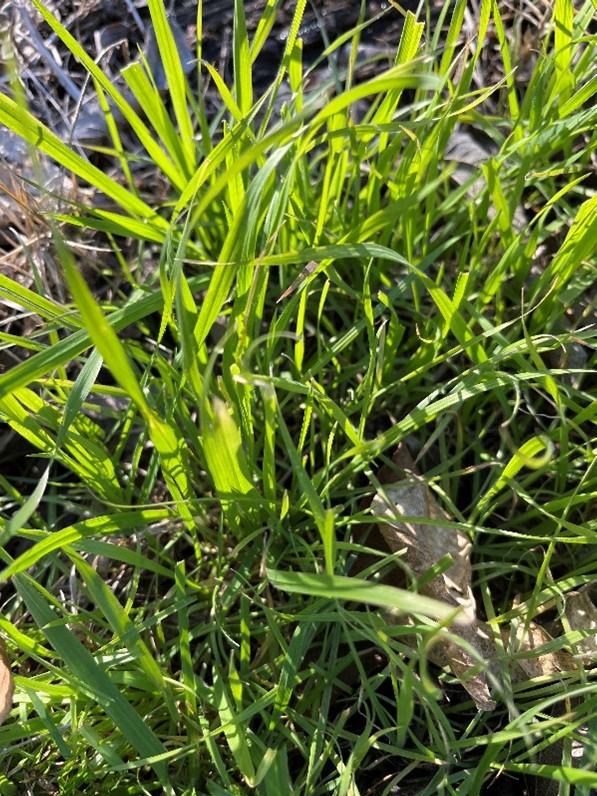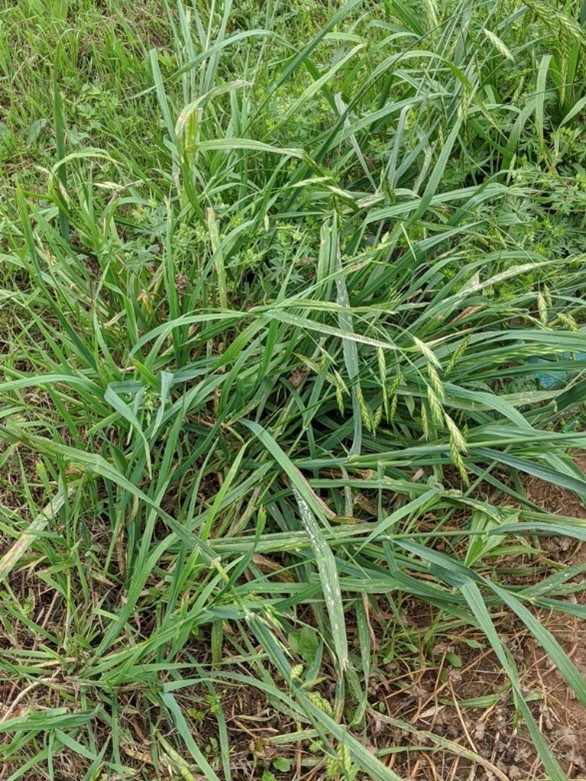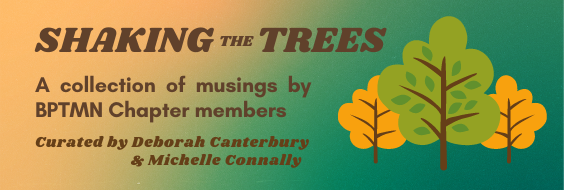Leah Justice, Class of 2021 and Rich Jaynes, Native Grass Expert and North Texas Master Naturalist
An interesting grass shows up in the winter and in drought conditions. Right now you can find it in our parks or neighborhoods. Rescue Brome, Bromus catharticus, likes to grow in open and disturbed areas. This native to South America can be found across the United States. “The common name rescue grass refers to the ability of the grass to provide forage after harsh droughts or severe winters.” (Source: Wikipedia). Still curious about this green winter grass, I asked NTMN member Rich Jaynes his take on it and here is what he had to say:
“As for rescue grass, I’m going to have to give you a mixed review. I know that, because it is considered a non-native colonizer at best and invasive at worst, in my humble opinion I cannot bring myself to regard it as invasive for a couple of reasons. First and foremost, this species is often one of the first to arrive on a disturbed site and it is much, much better to have as a ground cover than many other alternatives (e.g., Scabiosa atropurpurea, hedge parsley, and its brome cousins Japanese brome or cheatgrass, or tenacious perennials like KR bluestem, Johnson grass, or Bermuda grass). It is superior to other invaders/non-native colonizers because I view it as a very manageable bandaid for disturbed ground. In graduate school, I studied Watershed Science and focused on the effects of different levels of ground cover (and other variables) on the infiltration rate of soils during rainstorms. Since it typically takes thousands of years to form an inch of soil in an upland environment, prevention of erosion is vital for any steward of the landscape. Without a doubt, virtually ANY type of ground cover is better than nothing when it comes to moderating the explosive effect that a raindrop has upon striking unprotected soil. So, for non-forested areas, in the absence of good native, perennial plant ground cover (and annual natives are effective, at least during the springtime), then I have been at times grateful to have rescue grass come to the ‘rescue’ when the alternative is bare ground or the other non-natives I mentioned above (or similar types).


The things I like about rescue grass are that it is (1) easy to spot, (2) easy to pull up the plant or trim the inflorescences when you want to replace it with native cover, and (3) I simply find it more attractive aesthetically than the non-native alternatives that might happen to show up. Would I ever include it in a seed mix? Heavens NO! But when it volunteers to protect the soil and nobody is offering to do anything better, then it is welcome as an effective, interim bandaid for the soil. And, like a bandaid, when you are ready to get serious about healing a disturbed site with native species, then it is the easiest to get rid of when that time comes. The metaphor that comes to mind is the difference in the level/duration of pain experienced from quickly ripping off a bandaid covering a scrape as opposed to slowly, painfully removing it. So, please don’t be too quick to dismiss the ‘rescue’ qualities in the name of this grass; truly, as hinted by its common name “rescue” as well as its Latin species label, the name of the plant may have named this B. catharticus because of the cathartic qualities it offers to a wounded landscape (at least until it can be replaced by something better).
I understand that the Texas Invasives website claims that rescue grass can “outcompete native plants and prevent natural regeneration” but I have not witnessed this and continue to maintain that if/when people are ready to put some effort into replacing rescue grass with (hopefully) perennial natives, then I don’t think it would be that difficult to control it and get the natives going. Unfortunately, I’ve not had the opportunity to ‘go after’ rescue grass for any reason because most nature preserves have much more challenging species that threaten the native flora so that I’ve not had the luxury of working down the ‘most wanted list’ to the point that rescue grass becomes the species to target. I look forward to that day.”



